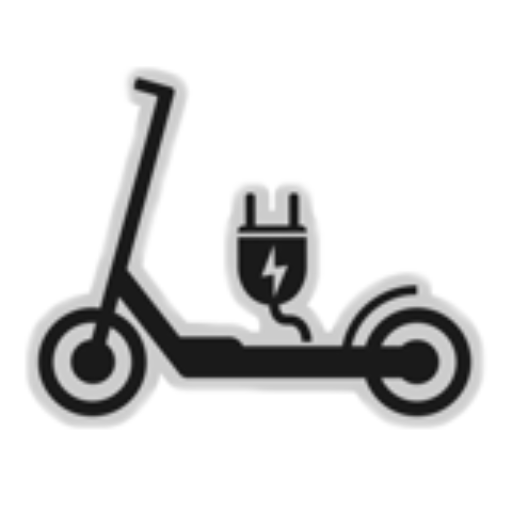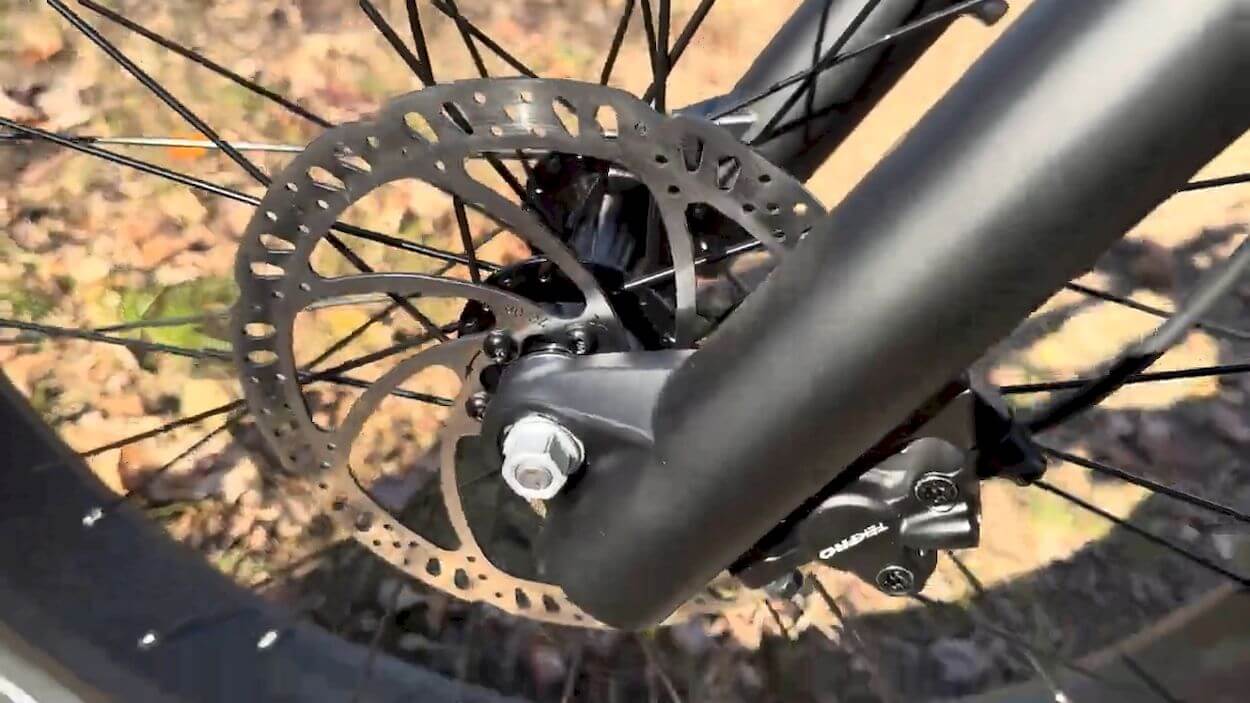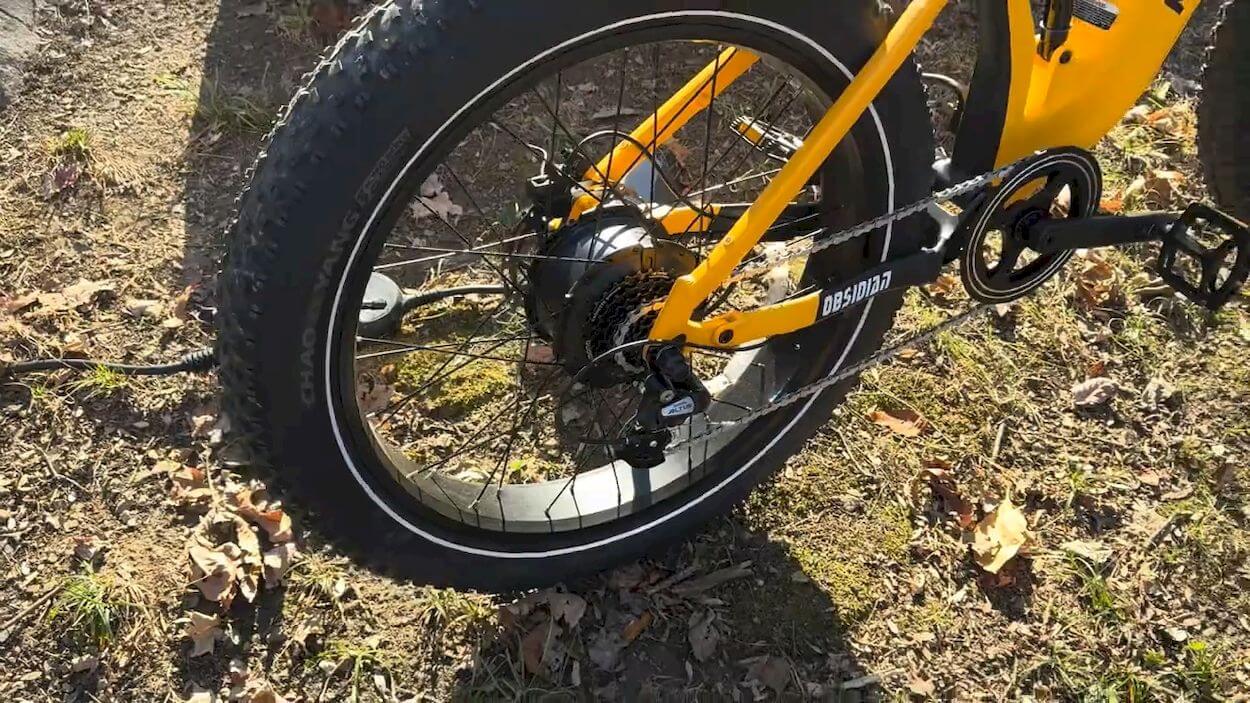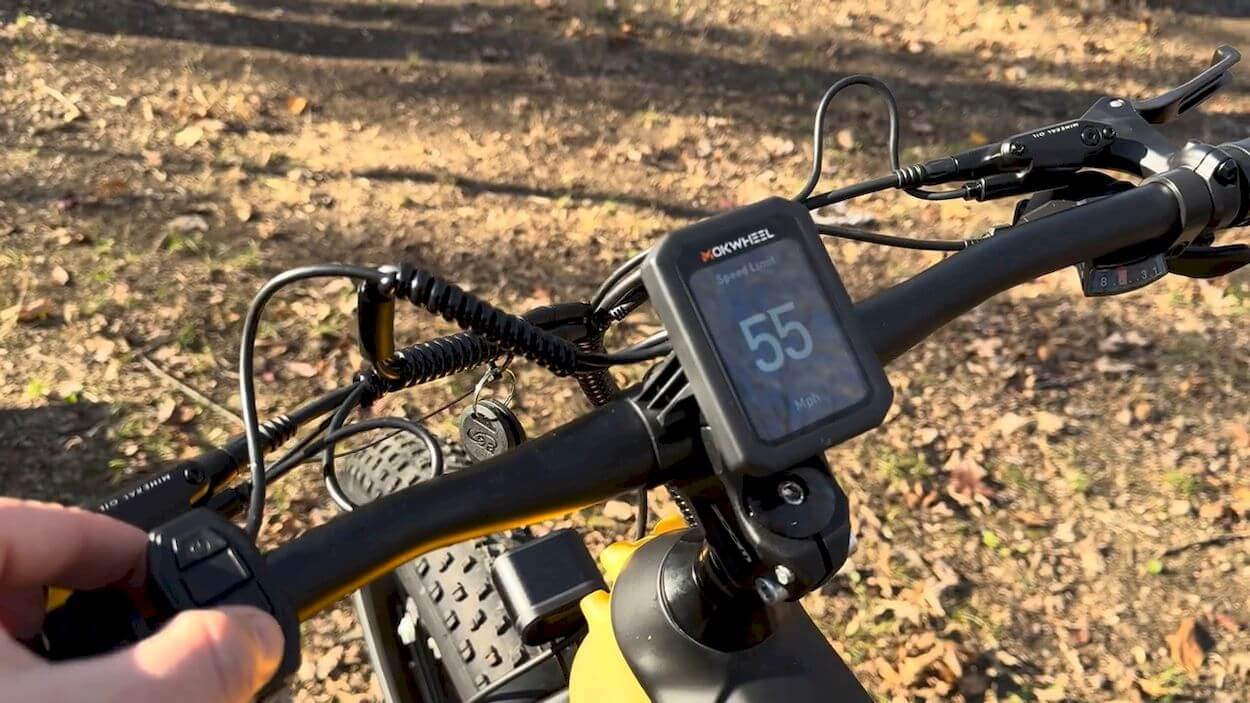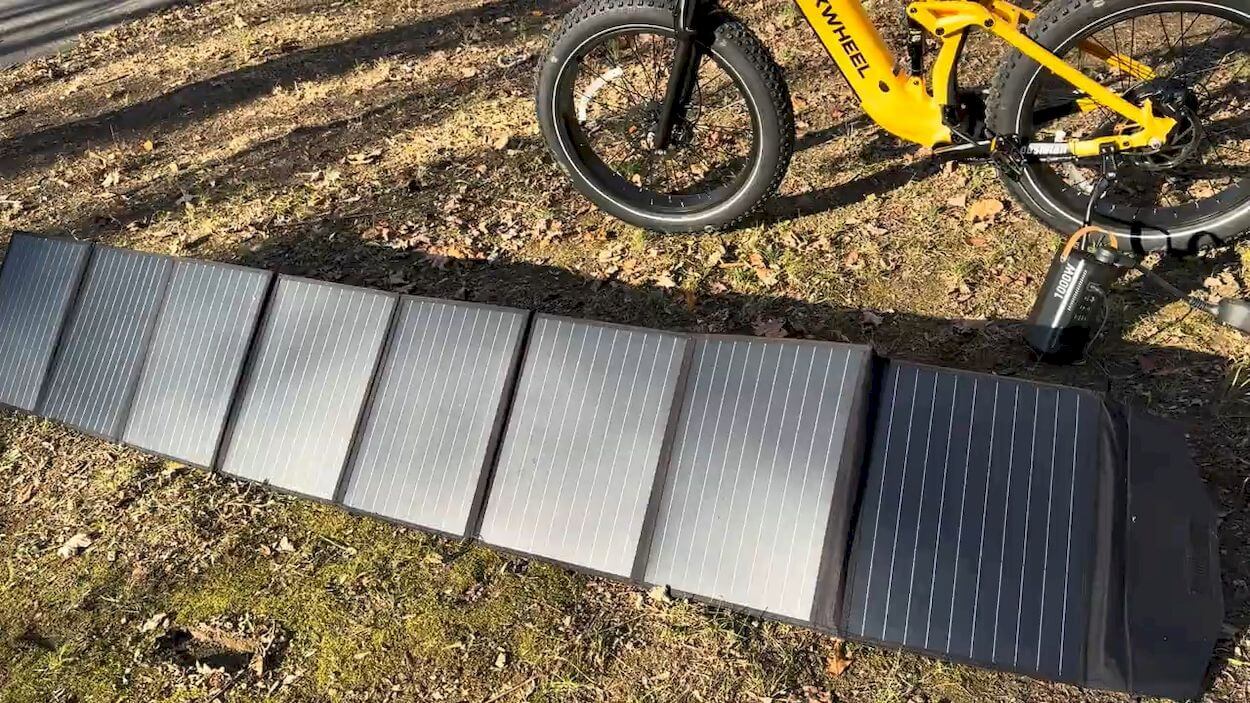Hello, everyone! This is Seth with Electrik, and today, I have something quite special to share with you – the Mokwheel Obsidian electric bike. In the area of electric mobility, the Obsidian stands out with its unique features and capabilities, making it an intriguing option for riders seeking both performance and innovation.
But what makes the Obsidian truly distinctive is its integration with solar technology. Seth demonstrates the bike’s solar charging capabilities, showcasing the foldable solar panels that can provide an additional charge even in less-than-ideal conditions. This feature not only extends the bike’s range but also aligns with eco-conscious practices, offering riders an environmentally friendly option for their daily commutes or adventures.
Stay tuned as Seth continues to explore the Mokwheel Obsidian, providing insights into its performance, design, and the unique experiences it offers to riders. For those looking to elevate their electric biking experience, the Obsidian seems poised to deliver on both innovation and excitement.
| Frame | 6061 Aluminum Alloy |
| Motor | 48V 1000W |
| Speed Class | Up to 28 mph on Level 5 PAS |
| Tires | 26x4.0" Puncture Resistant Fat Tire |
| Derailleur | 8 Speed Shimano Rear Derailleur |
| Spokes | Front 12 and Rear 12 Gauge |
| Front Fork | 130mm Adjustable Suspension |
| Throttle | Thumb Throttle |
| Brakes | TEKTRO HD-E350 Hydraulic Disc Brakes |
| Display | LED Integrated |
| Battery | Samsung 48V 19.6Ah |
| Range | 60~80miles |
| Weight | 77 lbs |
| Payload Capacity |
Design and Build Quality
The Mokwheel Obsidian is a striking fat tire electric bike that combines a robust design with commendable build quality. Its standout feature is the reflective fat tires that not only contribute to the bike’s aesthetics but also enhance visibility, especially in low-light conditions. The attention to detail in incorporating reflective elements into the tires is a safety-oriented touch that many riders would appreciate.
On the suspension front, the Obsidian doesn’t disappoint. With substantial travel of approximately 2 inches in the rear, coupled with both front and back suspension systems, it promises a smooth ride even on rough terrains. The plushness of the suspension, as noted in testing, adds a level of comfort to the riding experience, making it well-suited for various terrains.
However, the choice of the Shimano alus as the derailleur might be considered a trade-off for budget-conscious consumers. While it may not be top-of-the-line, the presence of Tektro brakes on both the front and back provides reliable stopping power with 180mm on each side. This should contribute to a secure braking experience, though considerations about the bike’s substantial size and weight are valid concerns.
One notable drawback mentioned is the front light’s impressive brightness, featuring two powerful LEDs. On the other hand, the rear light, attached as a wraparound to the seat, appears to fall short in comparison. This could be a potential safety concern, as visibility from the rear is crucial for overall road safety.
As for the motor, the information suggests that it is labeled as being made by Mokwheel but might be a rebranded version of a Buang or a similar model. While rebranding is a common practice in the industry, potential buyers might want to delve deeper into the specifics of the motor to gauge its performance and reliability.
So, the Obsidian offers an appealing package with its design, reflective features, and overall build quality. The dual suspension system contributes to a comfortable ride, but potential buyers should be aware of the compromises made in the choice of certain components, such as the Shimano altus derailleur. Additionally, the discrepancy in the quality of front and rear lights raises concerns about overall safety, urging prospective riders to carefully evaluate their priorities and preferences in an electric bike.
Mokwheel Obsidian: Motor and Controls
The Mokwheel Obsidian boasts a powerful 750-watt motor, with an impressive 1,000-watt peak, delivering a robust performance during rides. The ability to operate at 1,000 watts at its peak ensures that the bike can handle demanding terrains and provide an extra burst of power when needed, enhancing the overall riding experience.
For those looking to customize and potentially upgrade their Mokwheel, the provided information suggests a straightforward process. By simultaneously pressing all three buttons, riders can access a mode that allows adjustments, notably in terms of speed limits. The throttle, conveniently located on the left side, adds an extra layer of control to the bike’s performance.
A notable feature highlighted is the capacity to set the speed limit for electric assist. Adjusting this parameter allows riders to tailor their experience, determining the maximum speed at which electric assistance will be provided. This customization can be particularly useful for riders who want to adhere to specific speed regulations or prefer a particular pace.
The mention of a 55 mph speed limit might be considered high for some, but it underlines the bike’s potential for high-speed performance. Setting the electric assist cutoff at 30 mph strikes a balance between speed and safety, especially in urban environments like New York.
The aesthetic appeal of the Obsidian is emphasized, with bright yellow coloring contributing to increased visibility on the roads—a critical factor for safety. Details like faux leather hand grips add a touch of style and comfort to the overall design.
However, the inconvenience of having to set the favorite pas5 mode every time the bike is turned on could be a minor drawback for users seeking a more seamless experience. Streamlining this process might enhance the user-friendliness of the bike.
Solar panels and Battery
The Mokwheel Obsidian stands out not just for its impressive features as a fat tire electric bike but also for its innovative integration with solar technology, making it a versatile and eco-friendly choice for riders. The solar setup, consisting of foldable panels, adds an extra layer of functionality to the bike, allowing riders to harness solar power and contribute to a sustainable energy solution.
The solar charging system is demonstrated to be effective, providing a noticeable charge even in less-than-optimal conditions, such as the fall season with a lower sun angle in a forested area. The ability to charge the bike directly from solar panels is a noteworthy feature, and the demonstration indicates that, under more favorable circumstances, substantial range extension could be achieved.
A standout component is the inverter that connects directly to the bike’s battery, offering a variety of outputs, including a kilowatt of power, a 100-watt USB-C port, a 10-amp 12V DC output, and conventional USB ports. This inverter essentially transforms the Mokwheel Obsidian into a portable power station, capable of supporting various electronic devices, from laptops to string lights.
The practicality of this feature extends beyond recreational use, as the bike could potentially serve as a backup power supply for essential appliances or devices during power outages. While it’s noted that attempting to charge a Rivian electric vehicle triggered an issue, the versatility of the inverter and its potential applications make it a valuable addition.
The foldable solar panels further enhance the bike’s suitability for camping or off-grid adventures, providing a convenient and portable energy source. The ability to power lights, charge electronics, or even serve as a backup for household essentials demonstrates the Mokwheel Obsidian’s potential beyond being just a mode of transportation.
So Seth suggests that further integration of the inverter into the bike’s design could enhance its overall convenience. However, even in its current form, the Mokwheel Obsidian presents itself as a forward-thinking and multi-functional electric bike, combining the benefits of clean energy with the practicality of a portable power supply. Overall, the Obsidian appears to be a great choice for riders looking to embrace both eco-friendly transportation and innovative energy solutions in a single package.
Mokwheel Obsidian: Conclusions
Overall, the Mokwheel Obsidian emerges as a standout electric bike, not only for its robust design and impressive riding capabilities but also for its innovative integration of solar technology and a versatile power inverter. The distinctive features that set this bike apart include its reflective fat tires, dual suspension system, and a powerful 750-watt motor (with a peak of 1,000 watts) that delivers a dynamic and enjoyable riding experience.
The solar charging system, coupled with foldable panels, adds an eco-friendly dimension to the Mokwheel, allowing riders to harness solar power for an extra boost in range. The demonstration of a direct connection between the solar panels and the bike’s battery, combined with the inverter’s various output options, transforms the bike into a portable power station with potential applications ranging from camping adventures to serving as a backup power supply for essential devices.
While the bike’s overall design and functionality receive praise, there are minor points of improvement suggested by the reviewer. These include the need for a smoother startup process and potential integration of the inverter into the bike’s frame for added convenience. However, these considerations do not overshadow the bike’s versatility and potential as a sustainable and multi-functional mode of transportation.
In essence, the Obsidian goes beyond being a mere electric bike; it represents a forward-thinking approach to eco-friendly mobility and portable energy solutions. Its ability to seamlessly integrate solar power into daily rides, coupled with the versatility of the inverter, positions it as a compelling choice for riders seeking a comprehensive and sustainable solution for both transportation and energy needs. With its unique combination of design, performance, and innovative features, the Mokwheel Obsidian stands out as a promising and exciting addition to the electric bike market.
